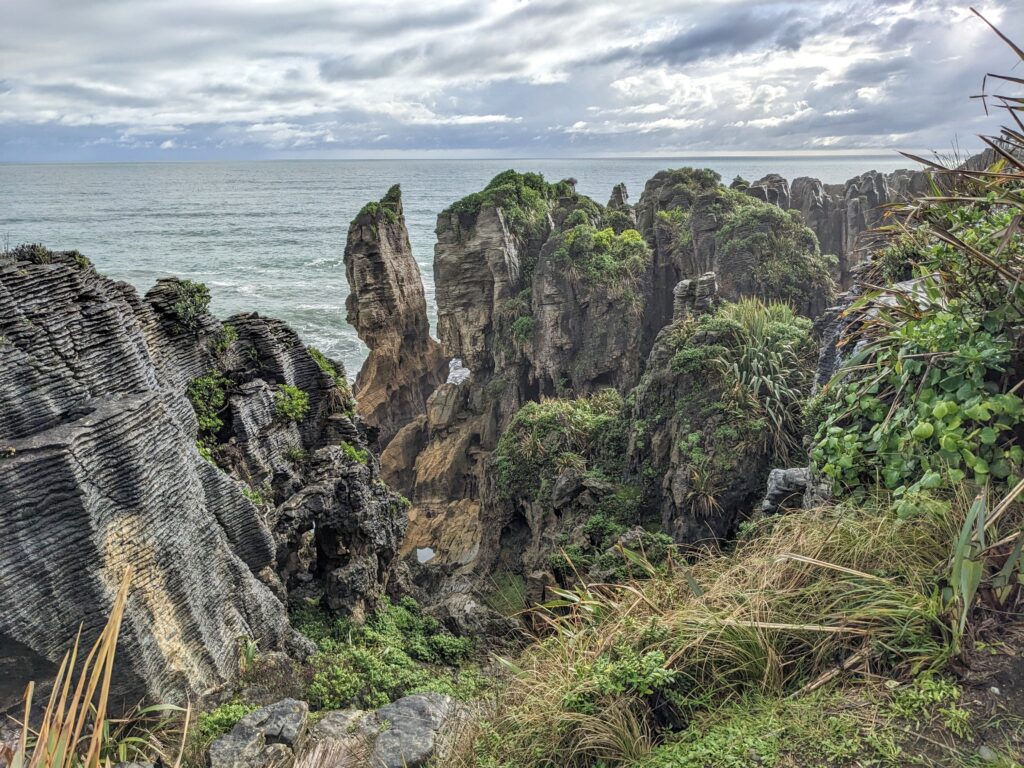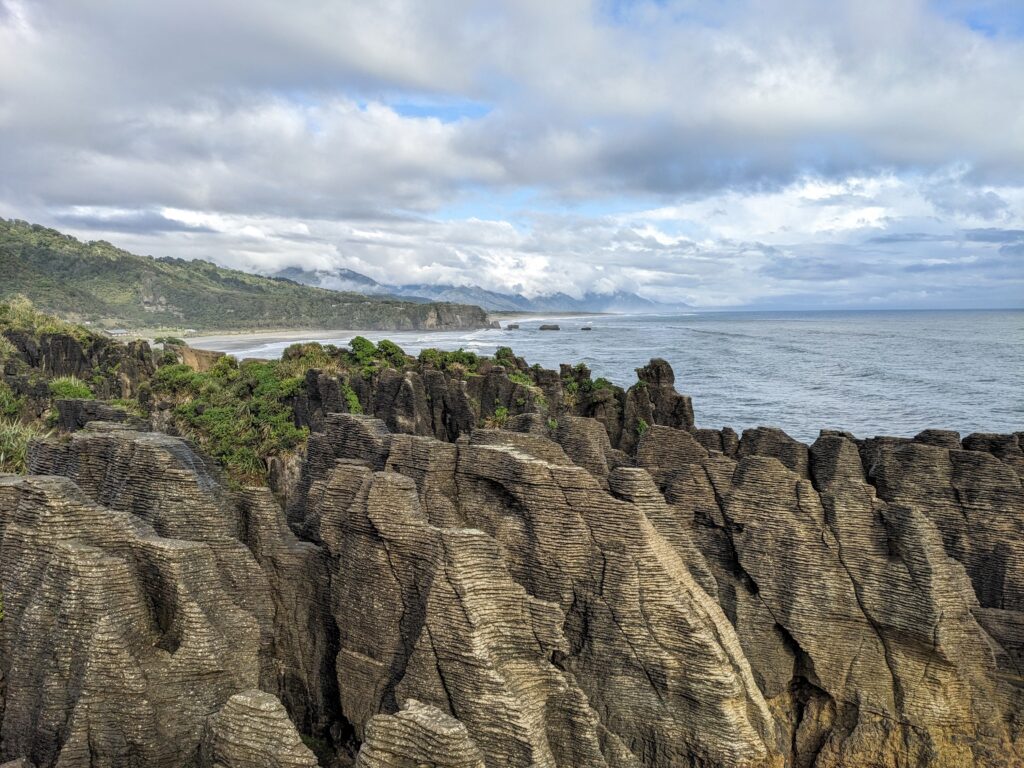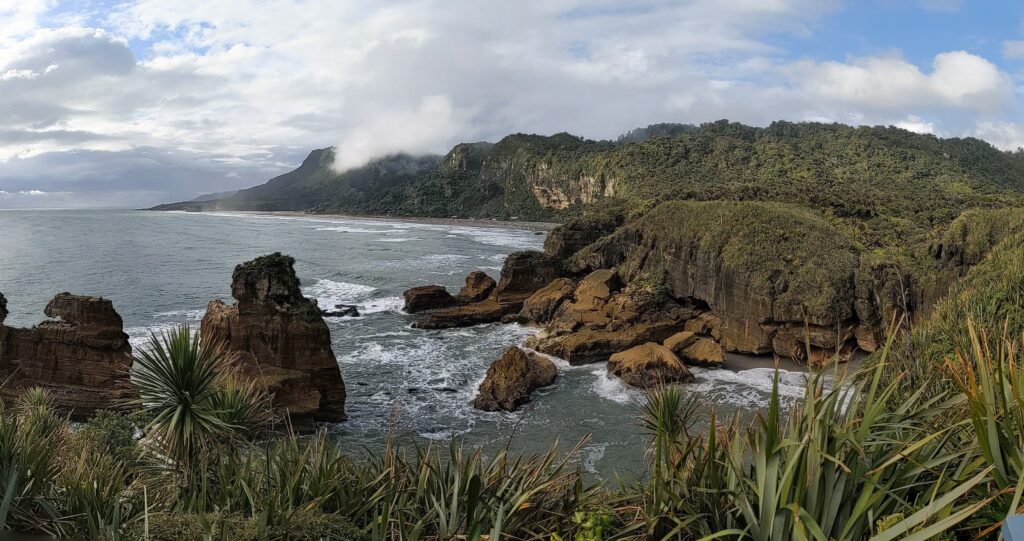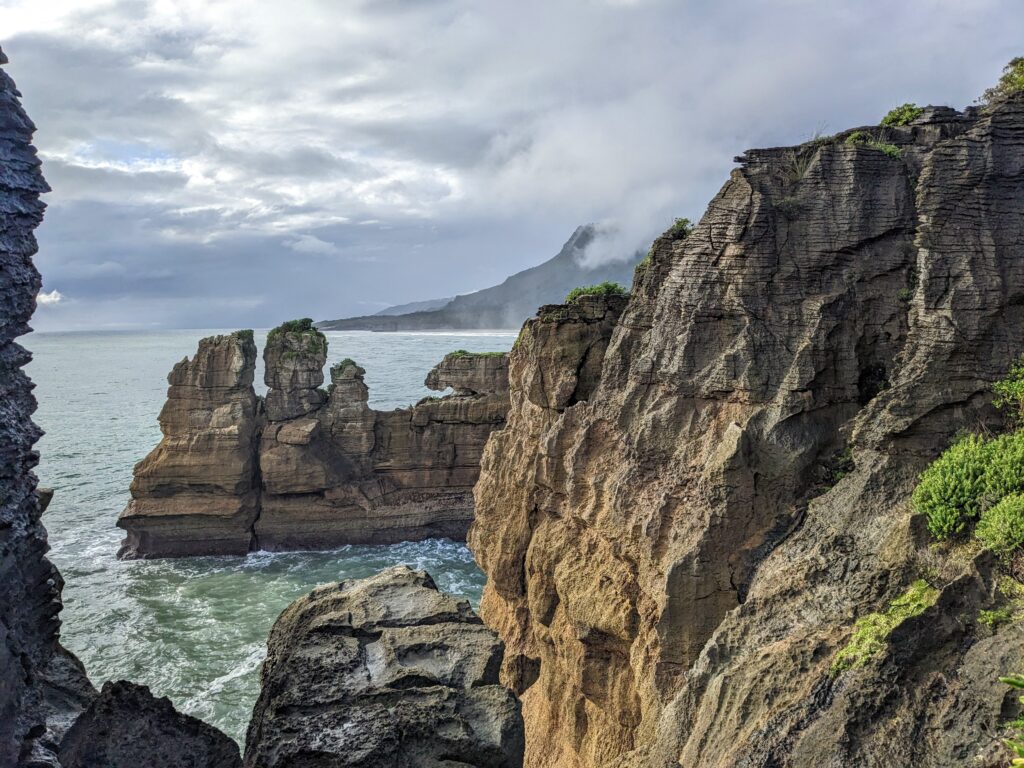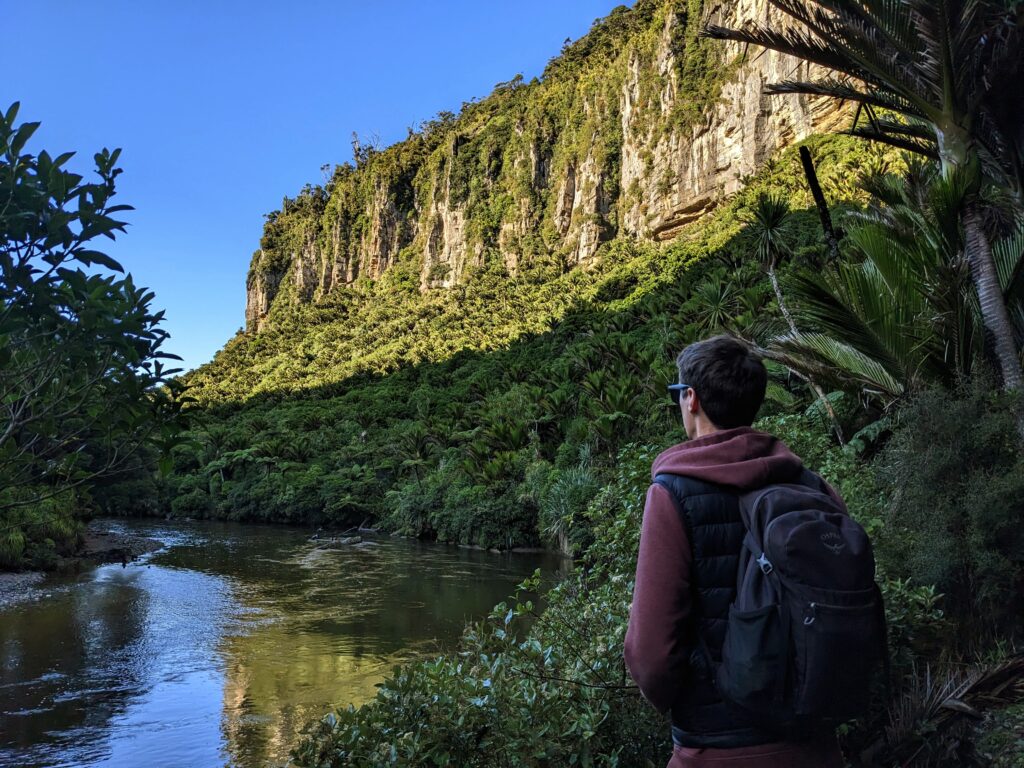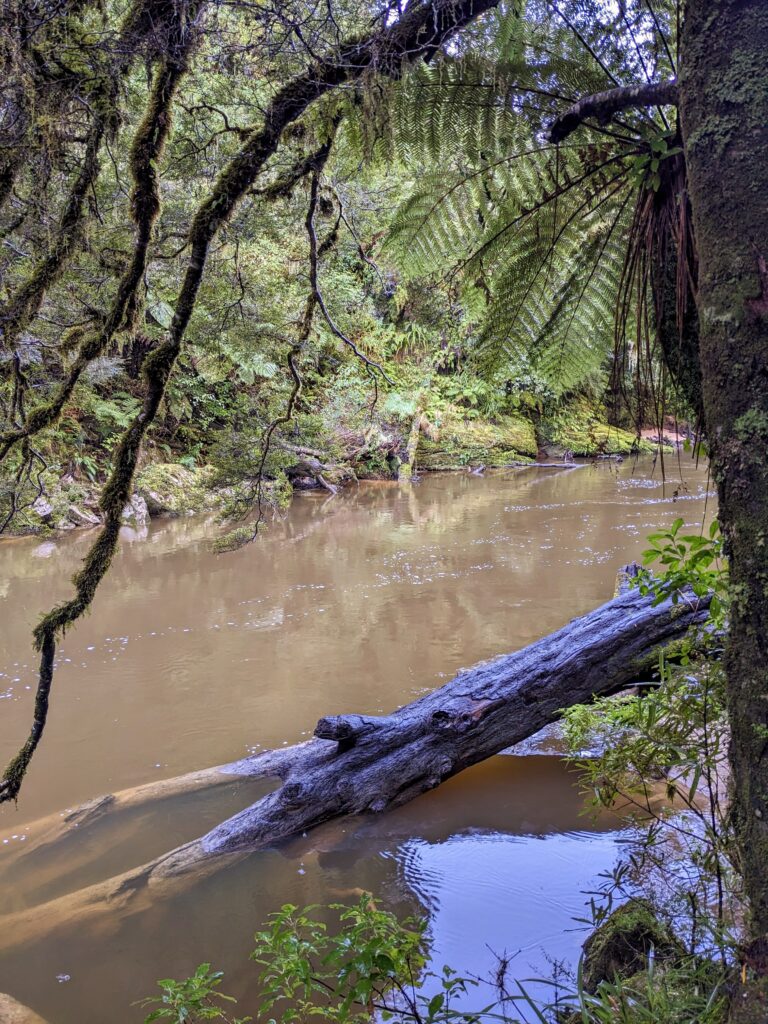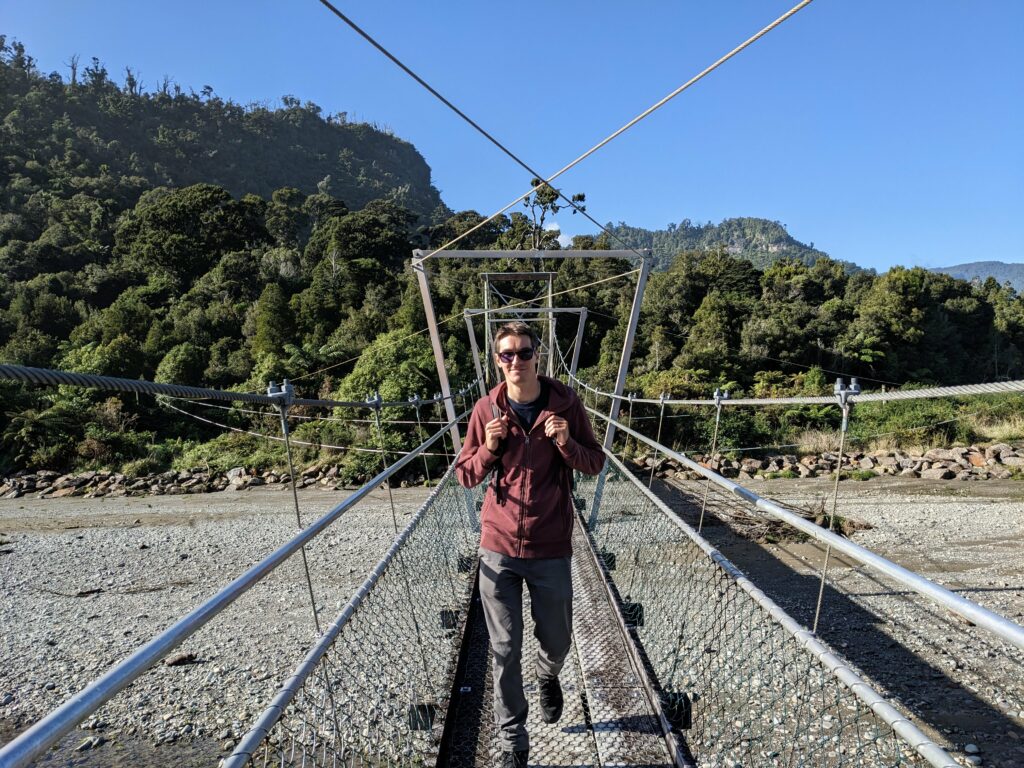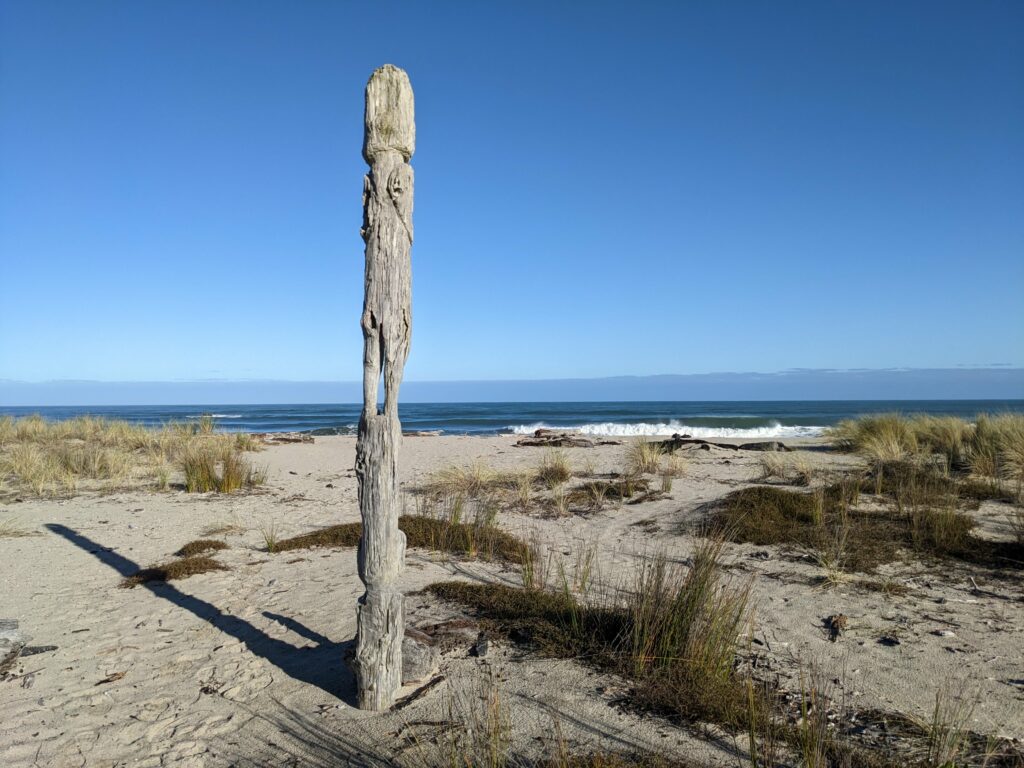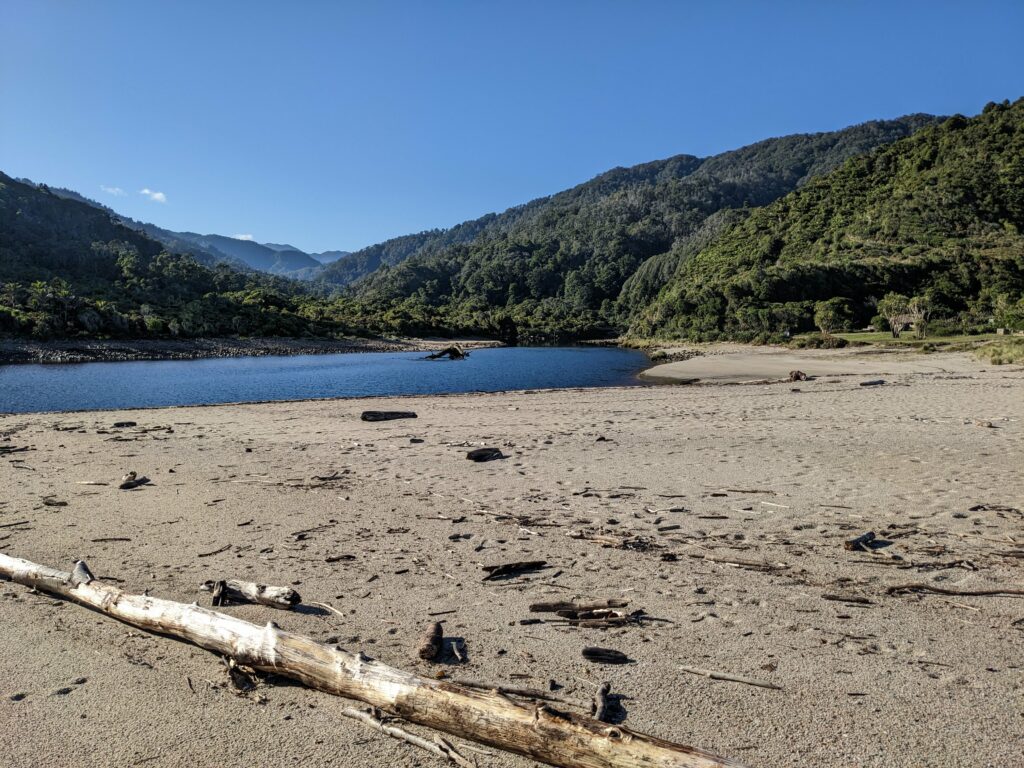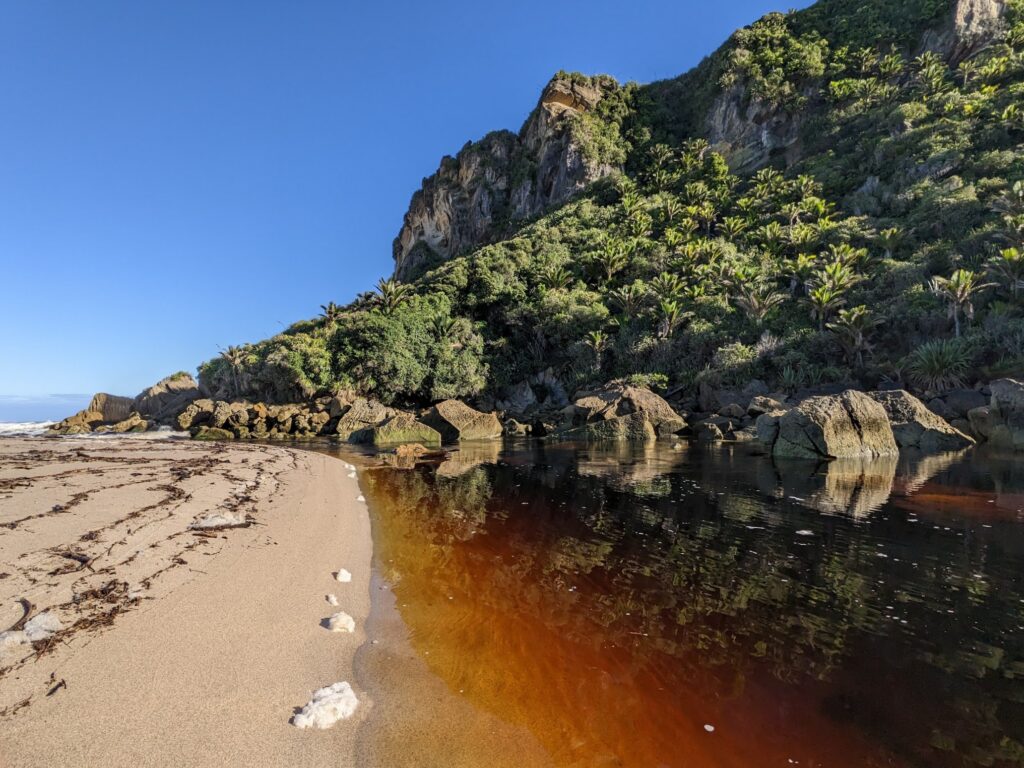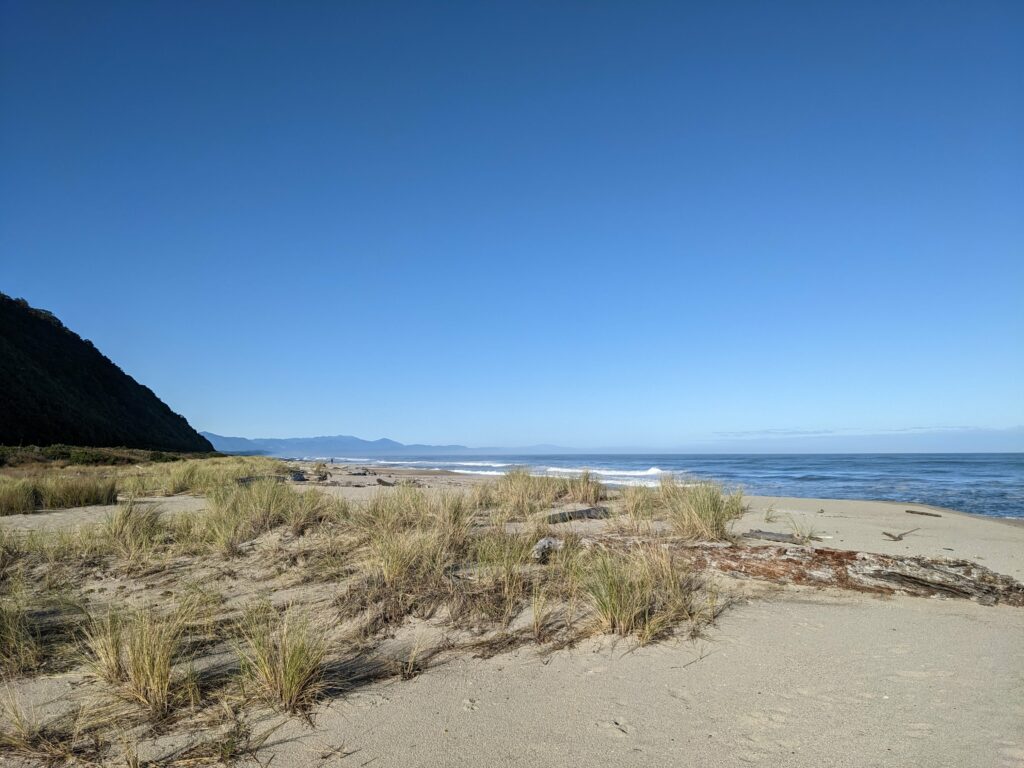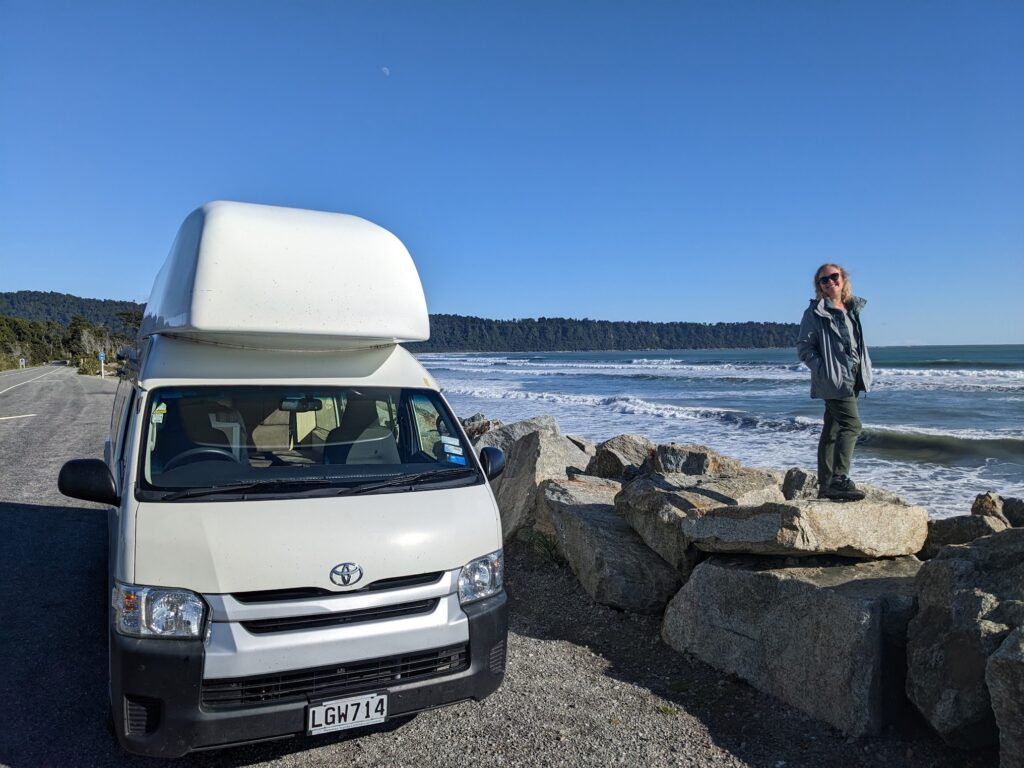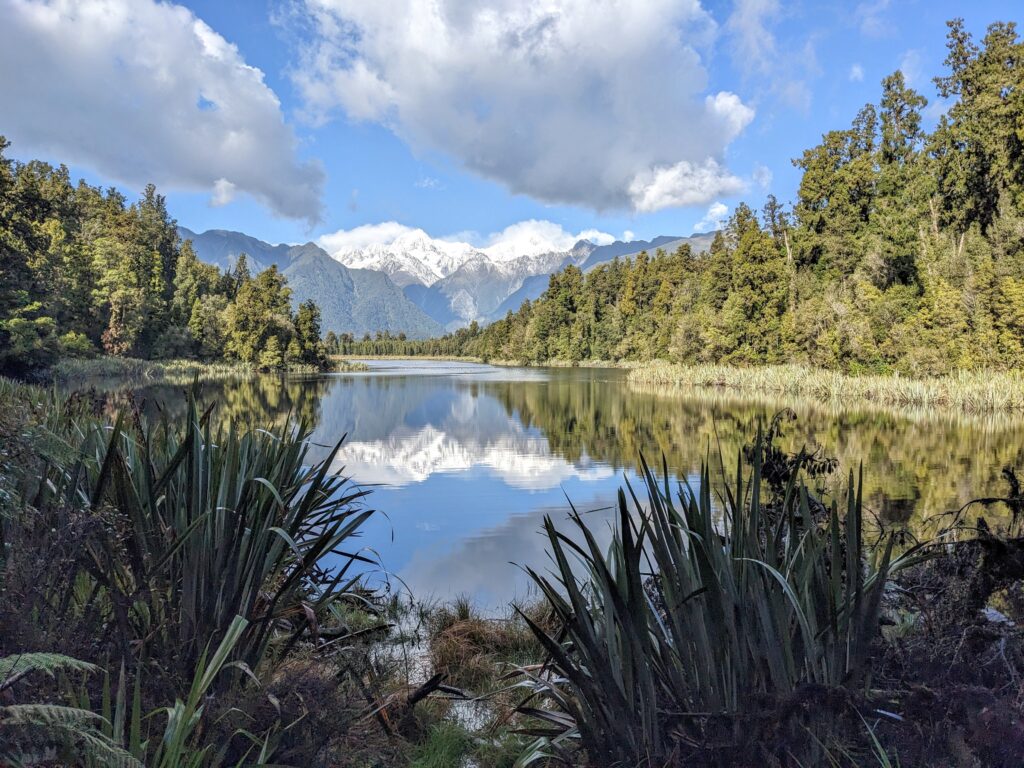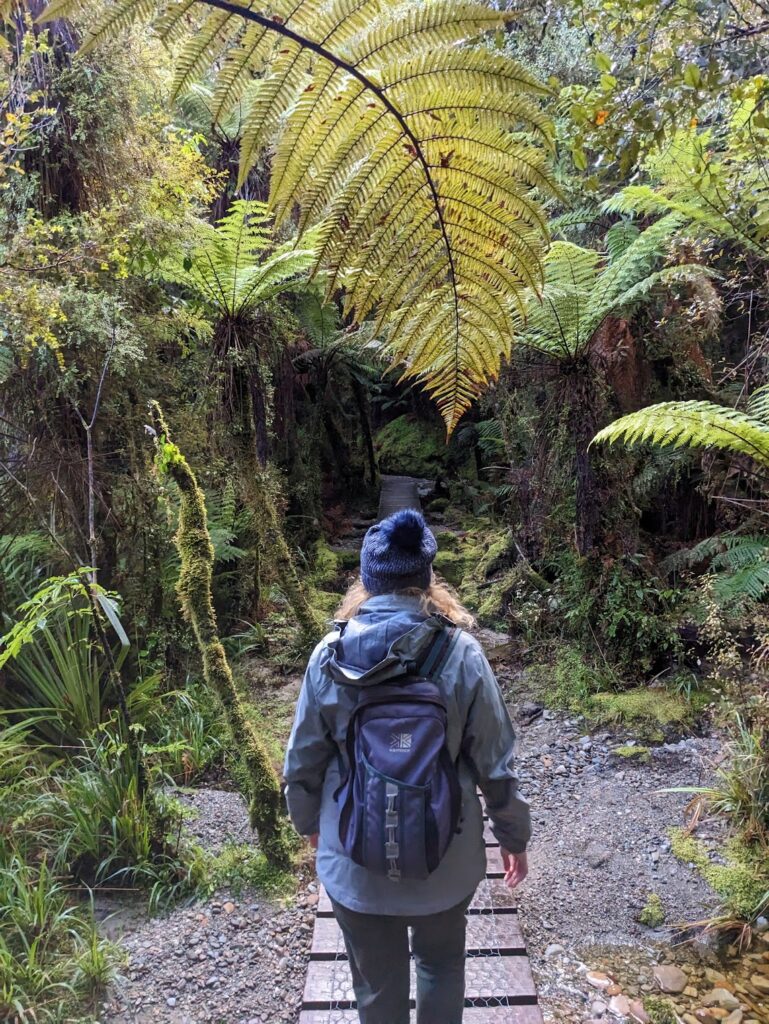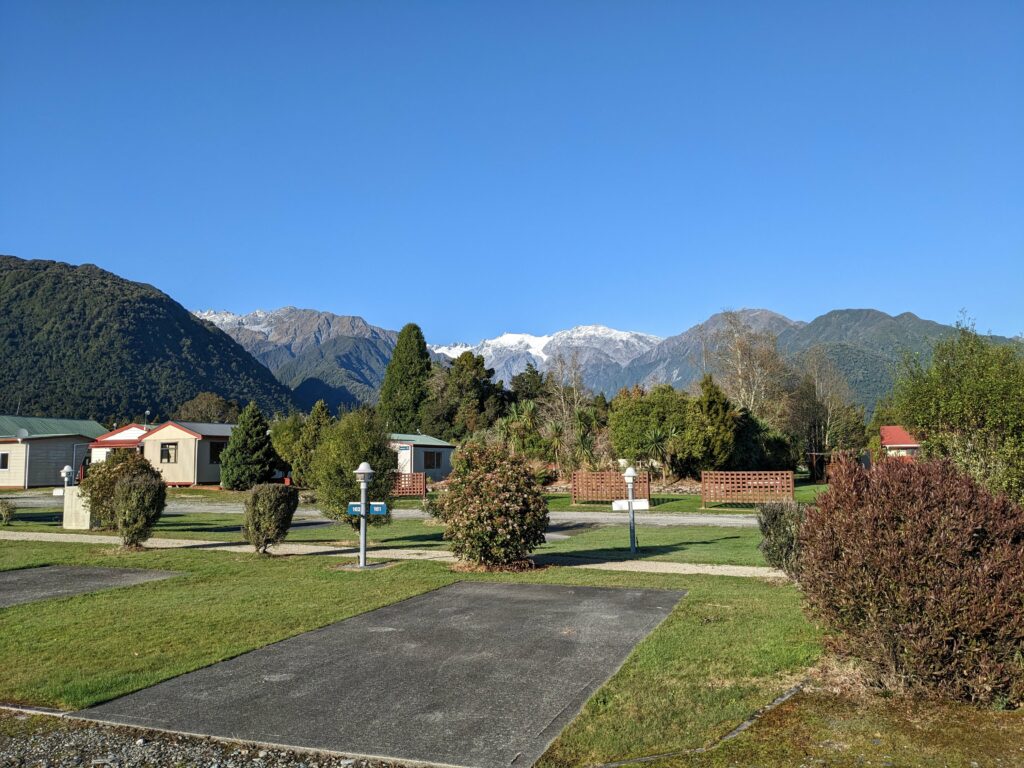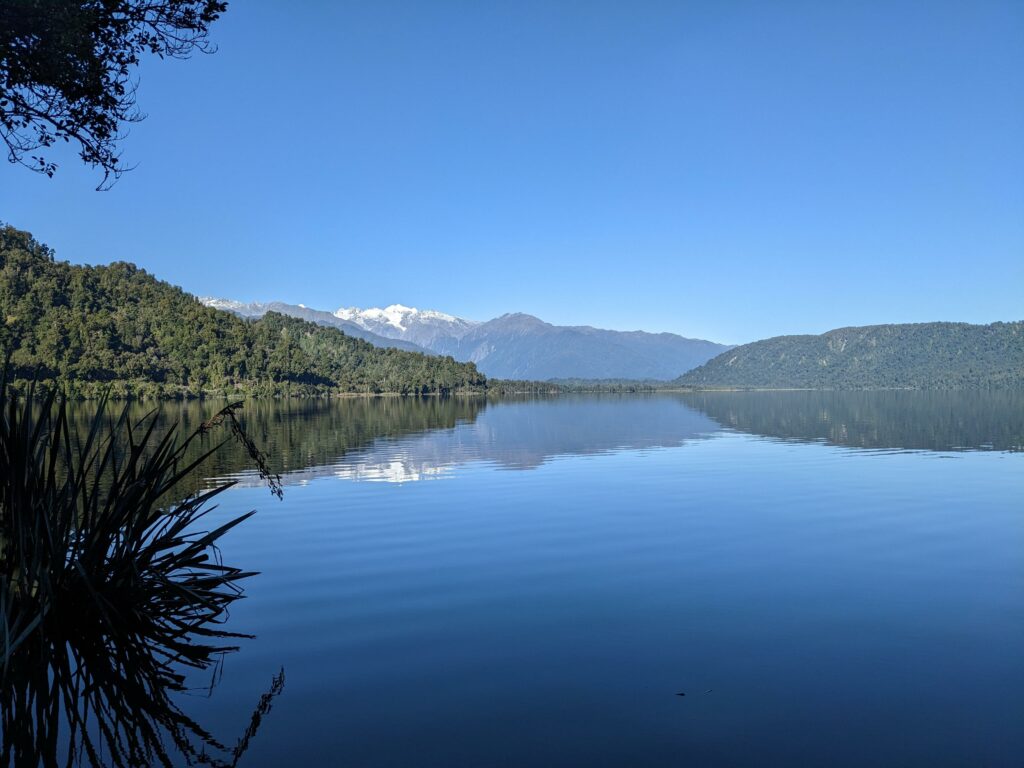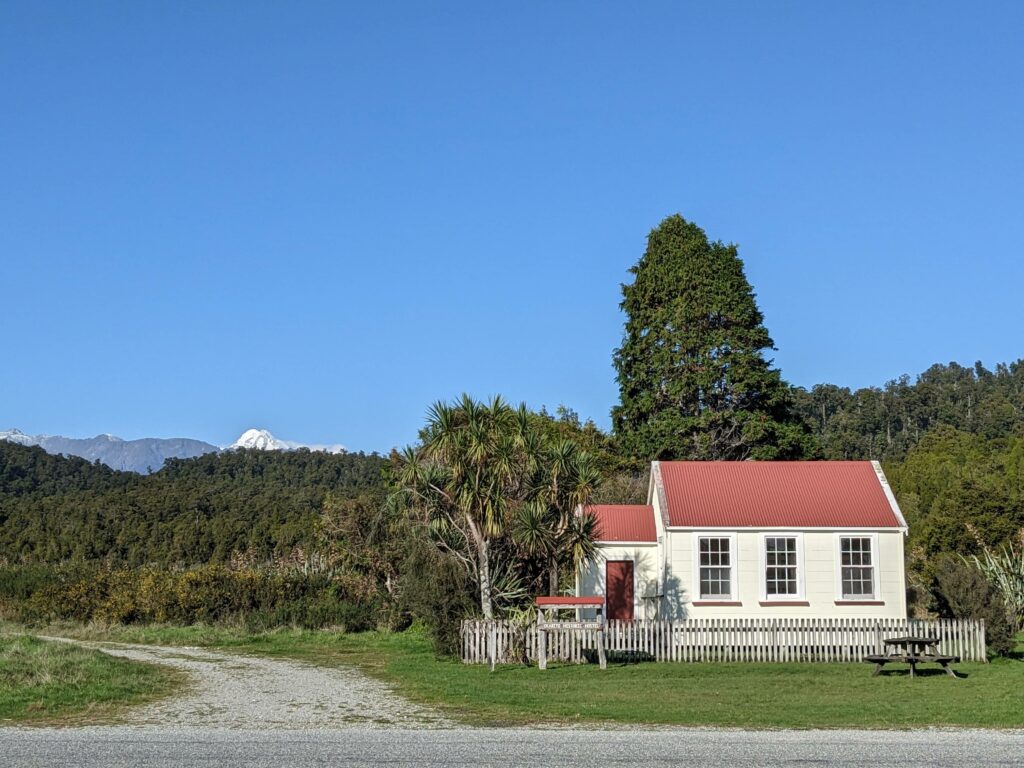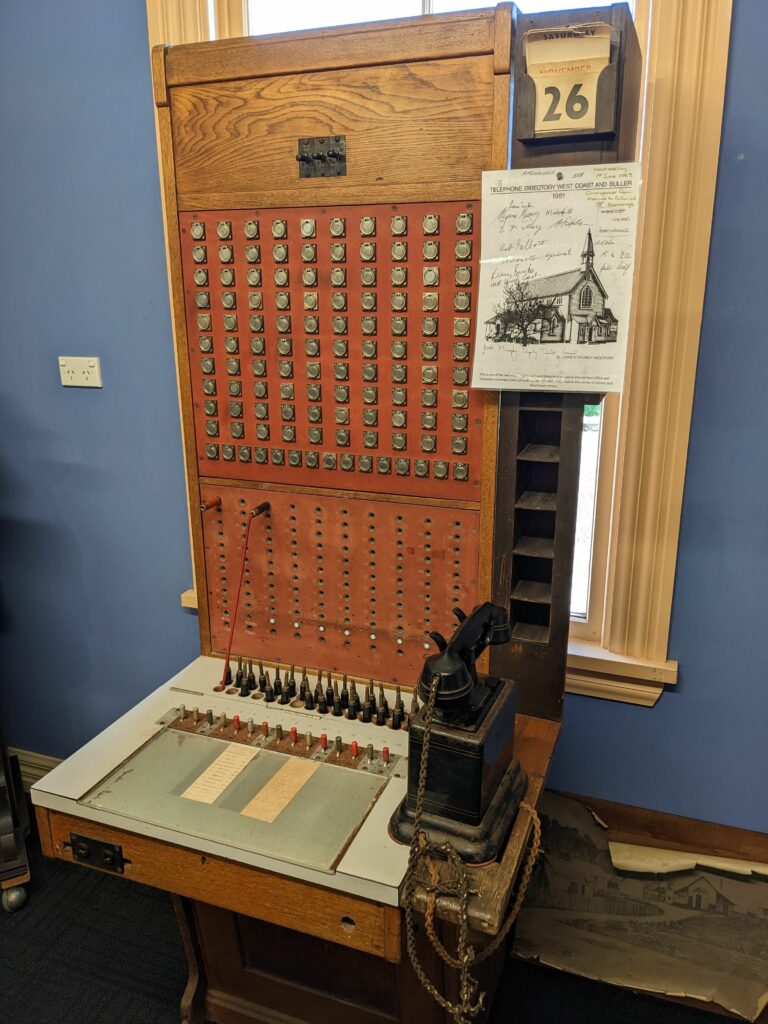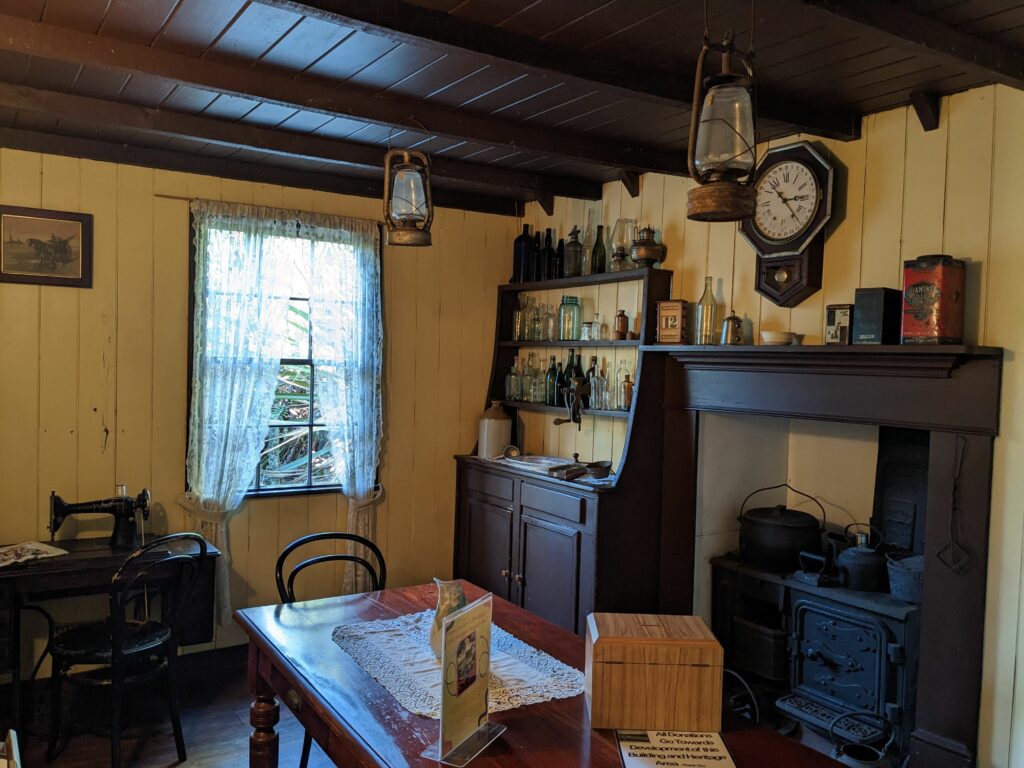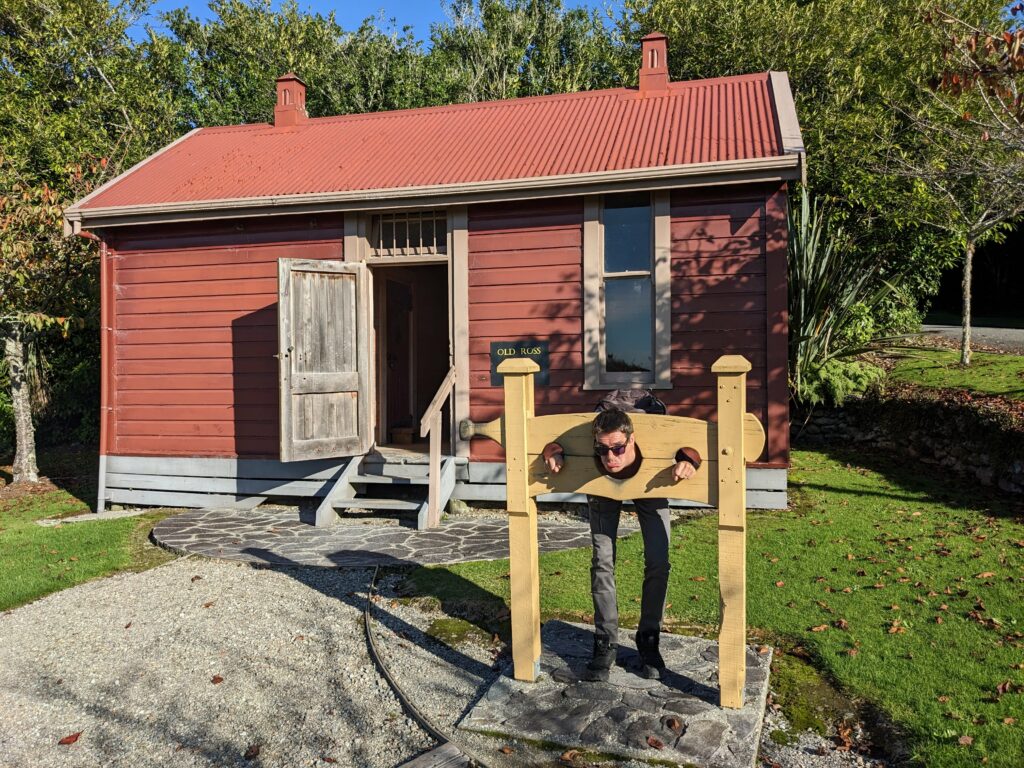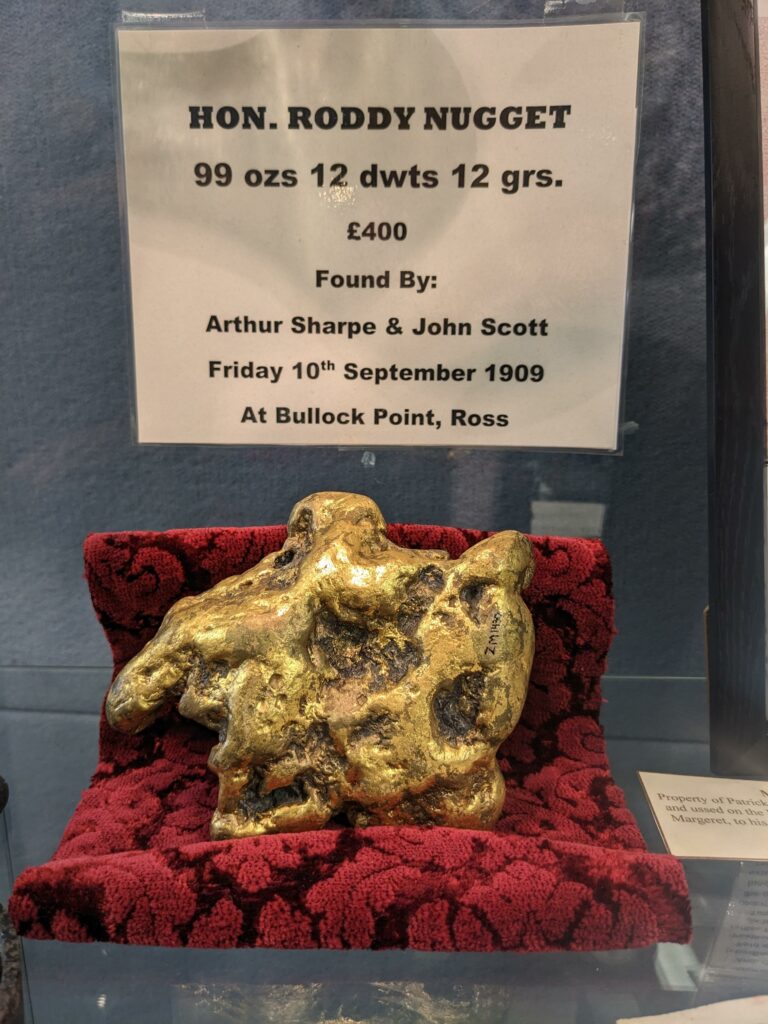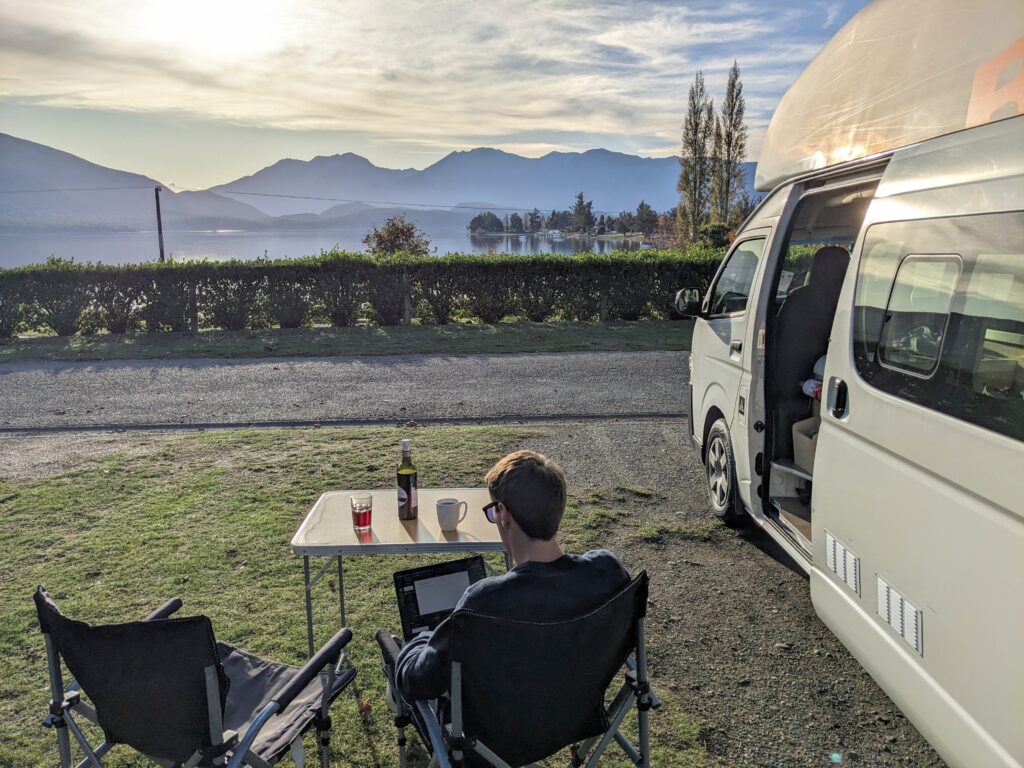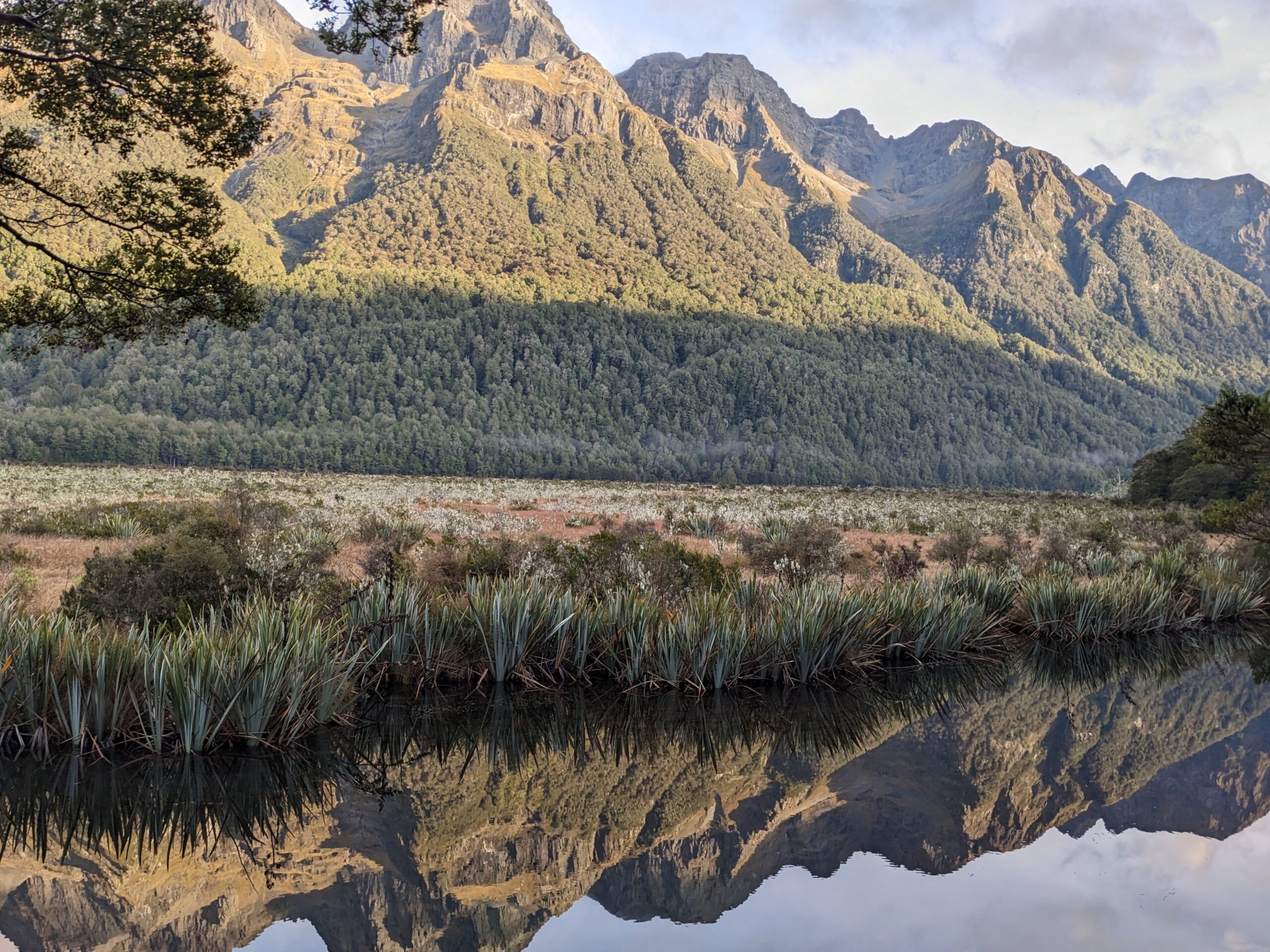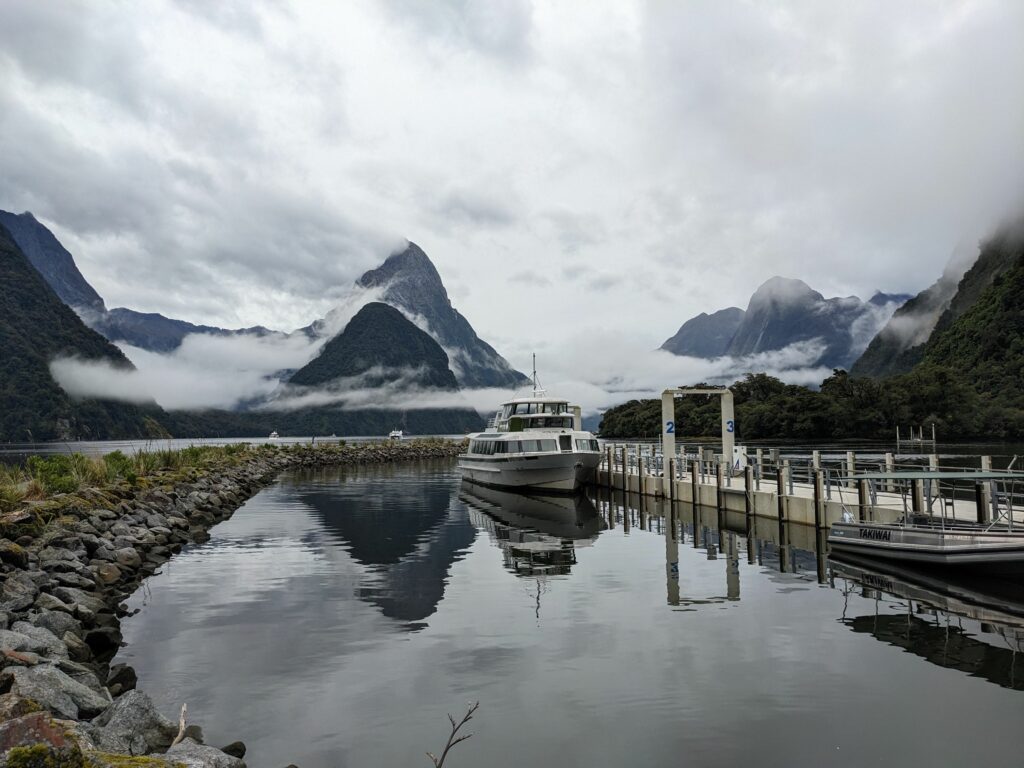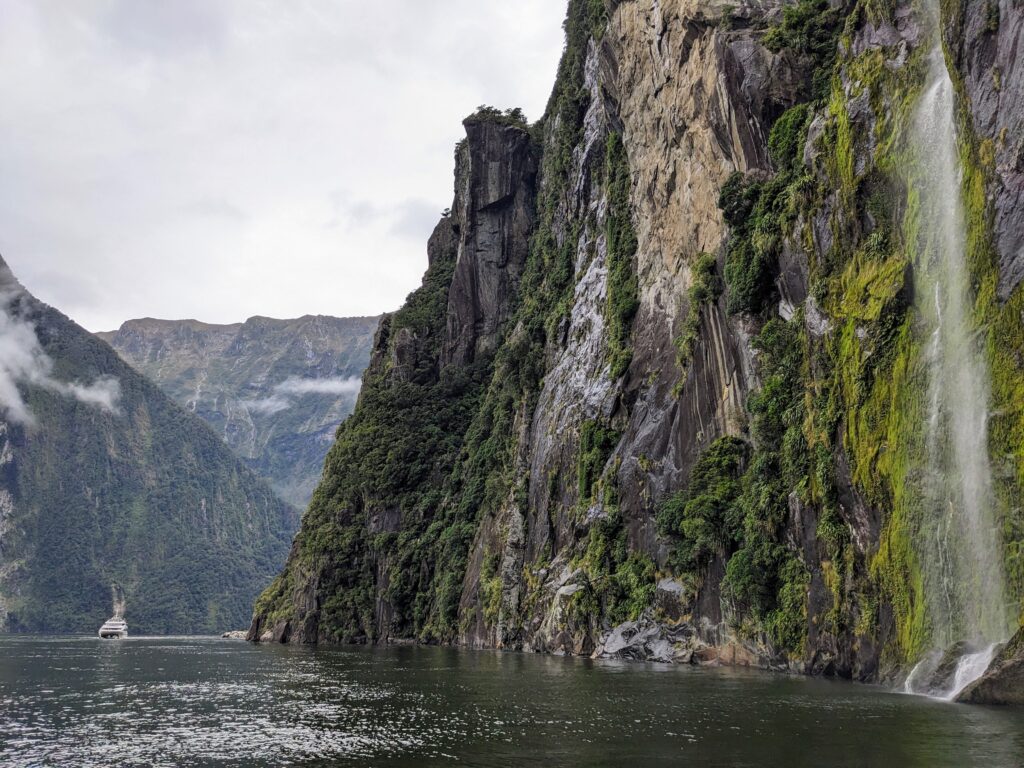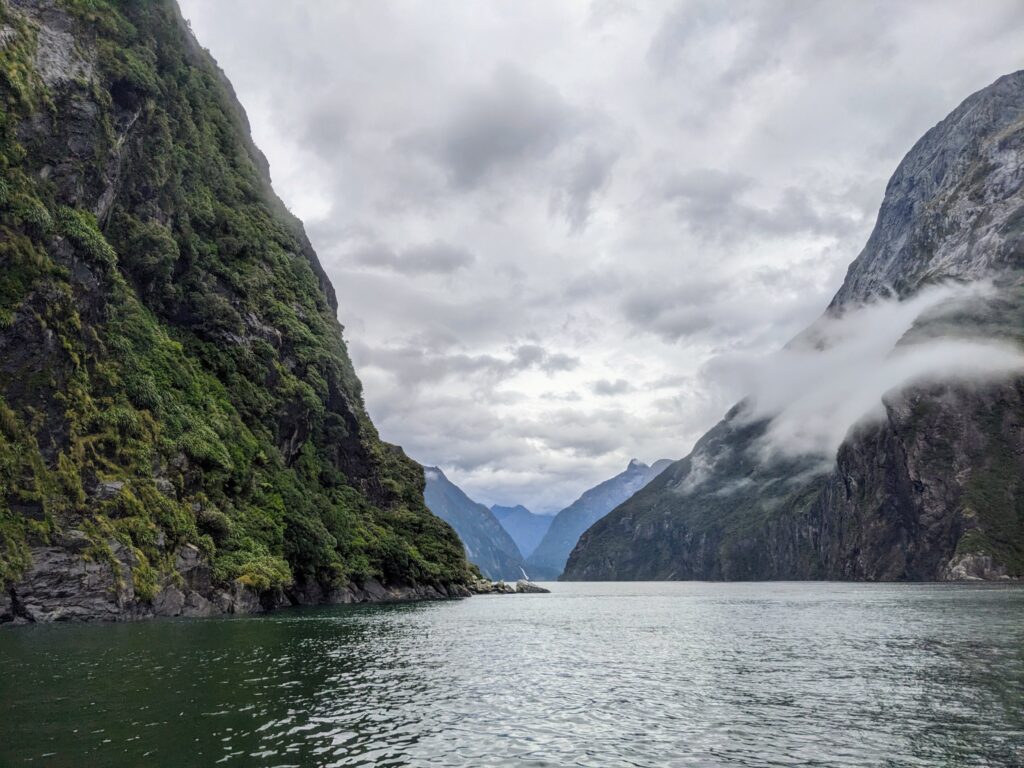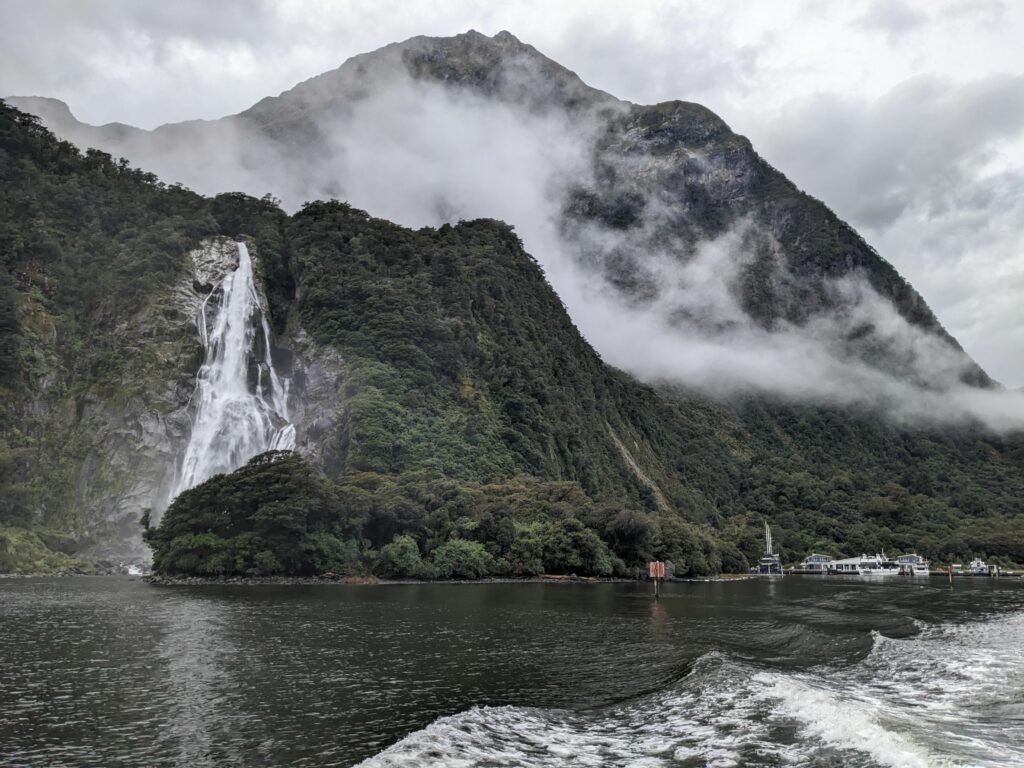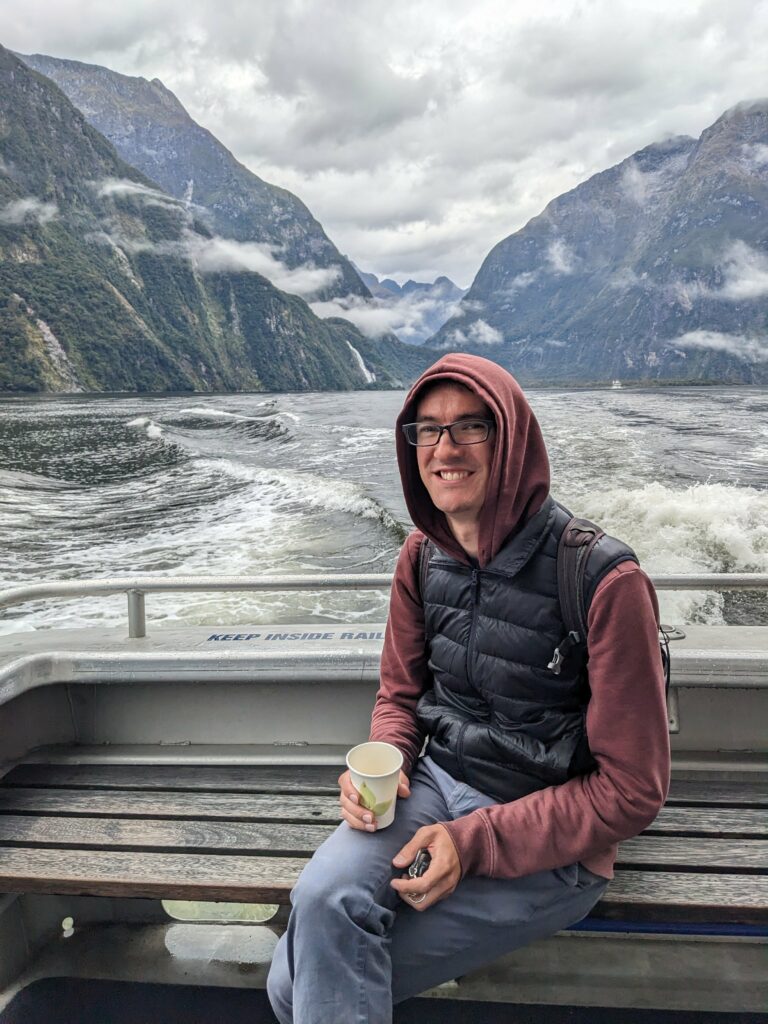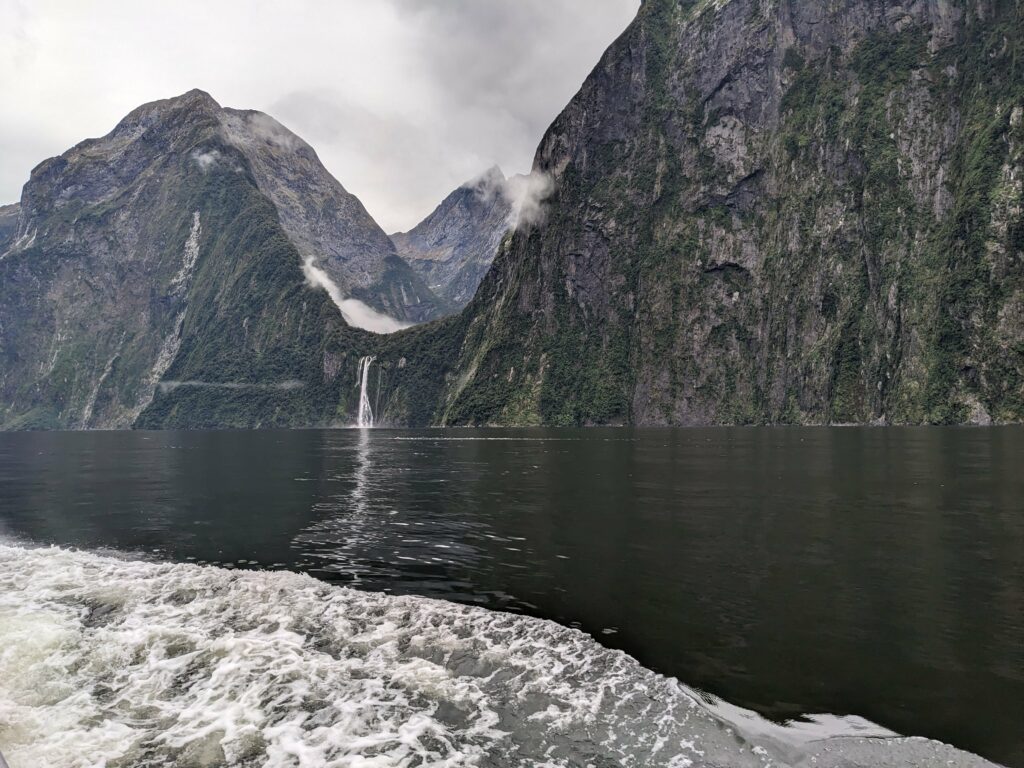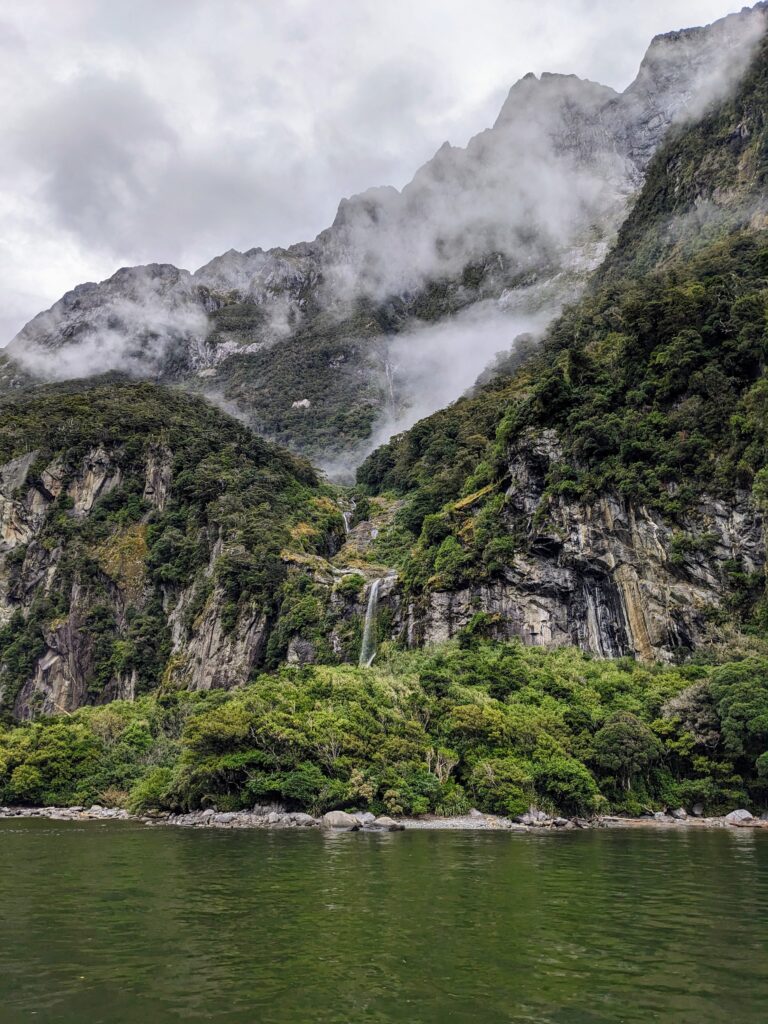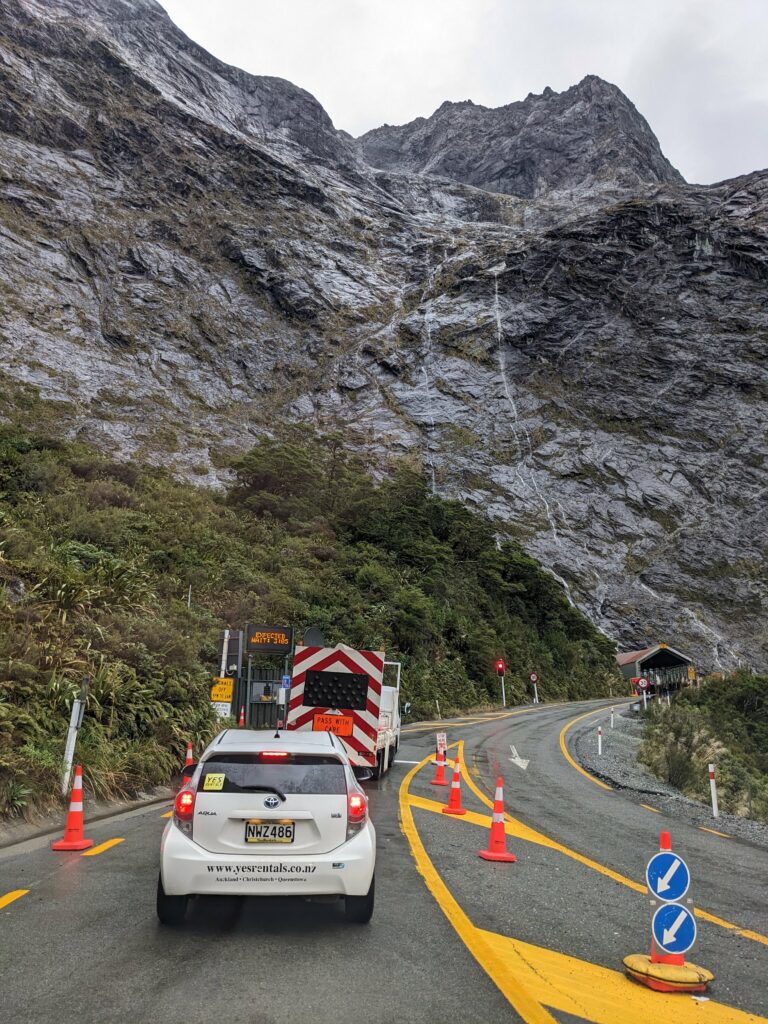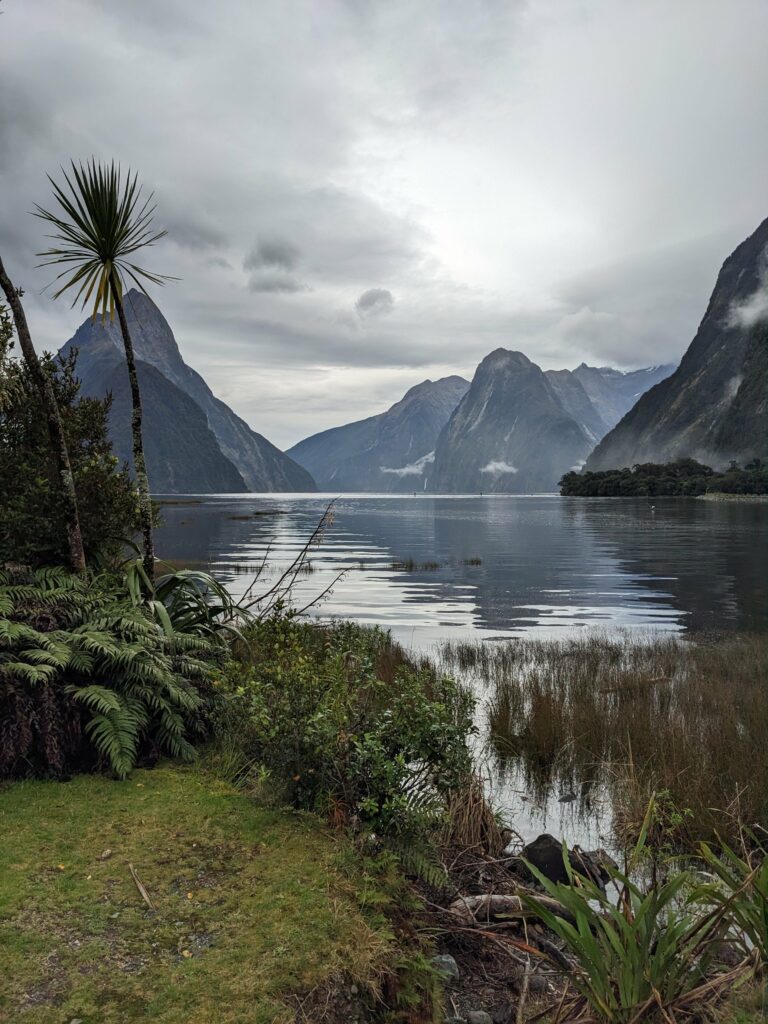We were very excited about the next stretch of the Great Coast Road, because we’d be driving right next to the sea the whole way (actually, I think this is the only section of Highway 6 that’s officially called the Great Coast Road – Oli may have got slightly ahead of himself a few posts ago!). Anyway, it was gorgeous and there were definite California vibes.

After our shortest day of driving yet, we stopped just an hour north of Hokitika in the village of Punakaiki, another recommendation from Michael (thanks, Michael!). In his words, “The area has a very Jurassic Park feel when it’s not raining.” So of course, it was pouring with rain when we arrived, but then again I think this is pretty much Punakaiki’s regular weather. It stopped for long enough for us to visit the famous Pancake Rocks, which are made up of horizonal layers of rock that are said to look like a stack of pancakes. They didn’t look at all tasty (lucky really, or I would have got hungry again), but they were very nice to look at all the same.
Punakaiki is also famous for having spectacular sunsets. Our campground was right next to the beach and we were parked up just steps from the sea, so we popped out in another break from the rain to catch a very moody sunset from the beach.

The next morning, the sun was back, so we headed inland on an 11km walk to explore the Jurassic Park landscape a bit further. It turned out we didn’t really need the sun for this walk, because the rocky mountains enclosed the valley so tightly that we were in the shade nearly the whole way anyway! But it was a beautiful route, particularly the first half, which passed along the Pororari River Track (this should have been the last half of the walk, but we accidentally walked it backwards – thanks, Oli!)
The only slightly disconcerting part was the sheer number of signs we passed telling us not to linger in certain areas because of the risk of rock falls. Looking up the slopes, we could see why! Anyway, it certainly stopped us from dawdling, which was lucky as it also meant we didn’t meet any dinosaurs.

Just up the road, we found an incredible spot for our lunch. It felt like we were nailing #vanlife!



After this, we were really on the clock. We picked up supplies and fuel in Westport, the last big(ish) town we would pass heading up the coast, and then raced the sun right to the end of the road, 112 km further north.
We didn’t quite make it to our destination before sunset, but thankfully the road by this point was a tiny single track and ran right next to the beach, so we still had a pretty good view.
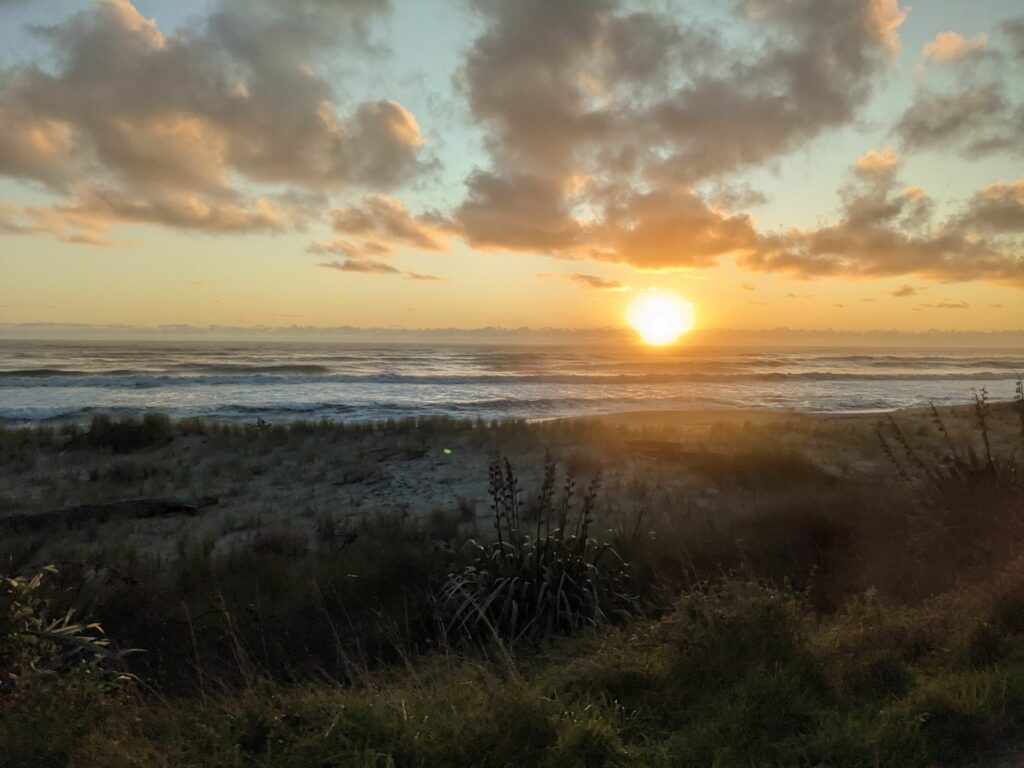
At the very end of the road sat Kohaihai Conservation Campsite, which was run by the Department of Conservation. We’d decided that just for one night we would trade a power hookup and showers for sea views and seclusion, and we’re glad we did as the setting was incredible, right on the beach and with no one else around. Although we’d missed sunset by a matter of minutes (and only because a band of pesky cloud was sitting on the horizon), we still headed straight to the beach to greet the many sandflies who were eager to join us for a glass of wine and entire bag of crisps.
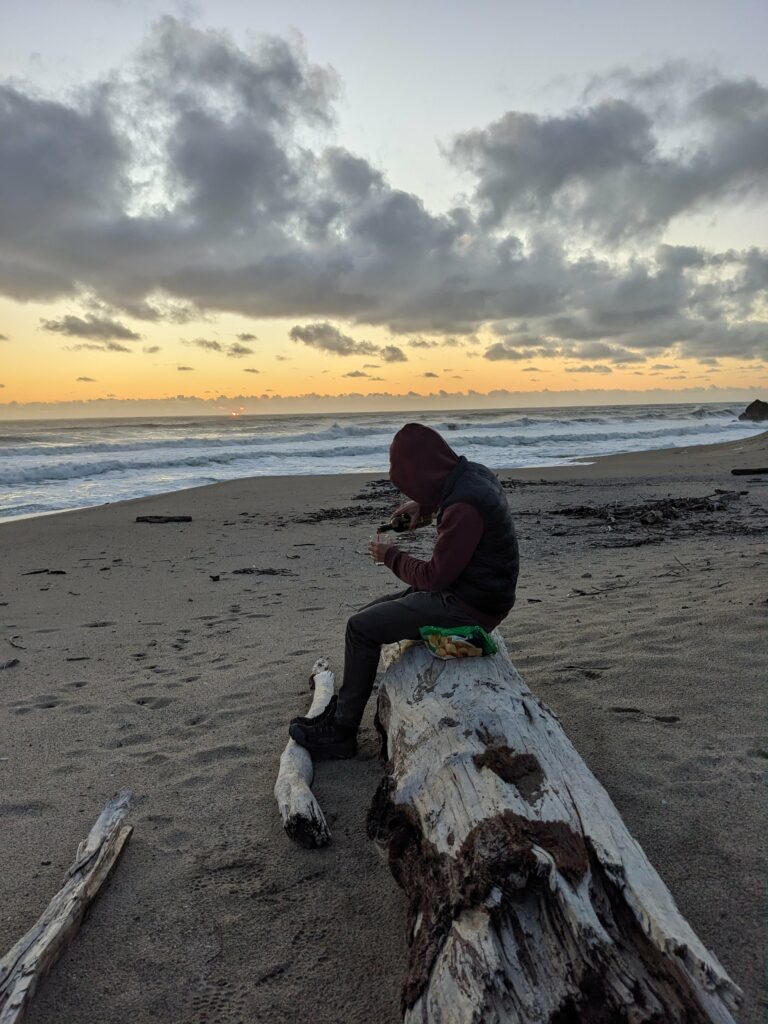
It was a slightly chilly winter evening without any heating, but being surrounded by kiwi calls and quite possibly the brightest stars we’d ever seen more than made up for it. We were nearly two hours from the nearest proper town at this point, so the starlight came in very handy when finding our way to the toilets, which also didn’t have any lights. We really were in the middle of nowhere!
The next morning, we awoke to the sound of the waves and took a walk along the beach to where the tannin-stained Kohaihai River met the sea.
After a lovely (albeit brief) offgrid adventure, we headed south back to civilisation, satisfied that we’d covered every inch of the west coast’s roads.
